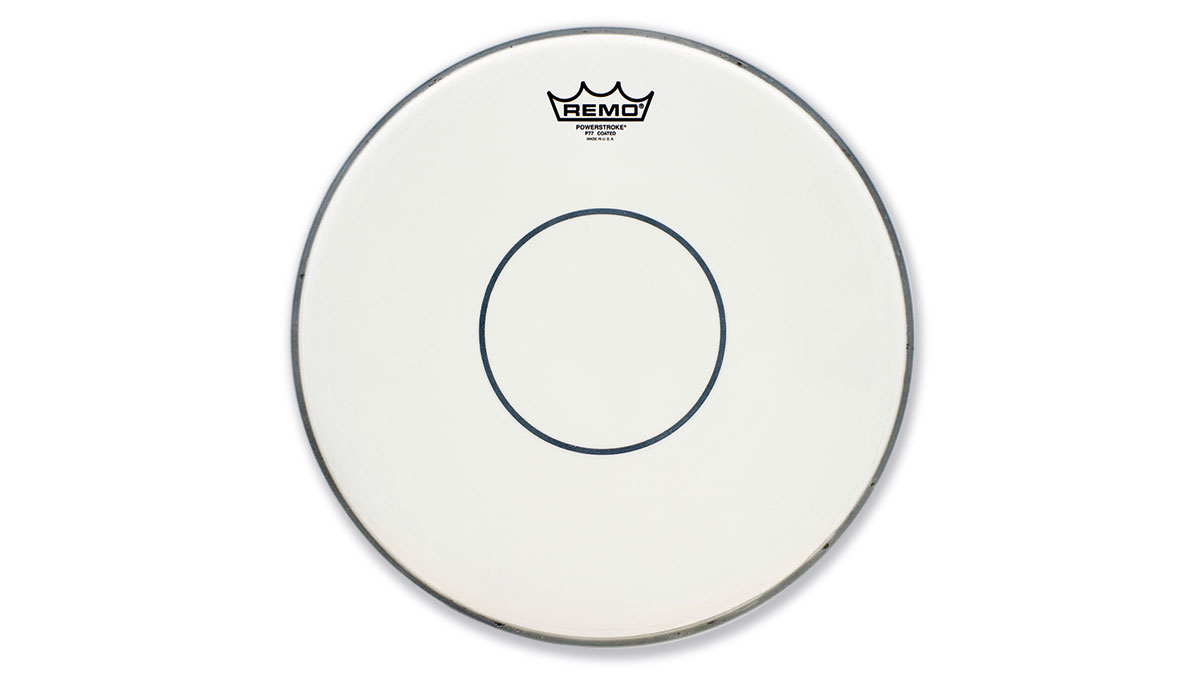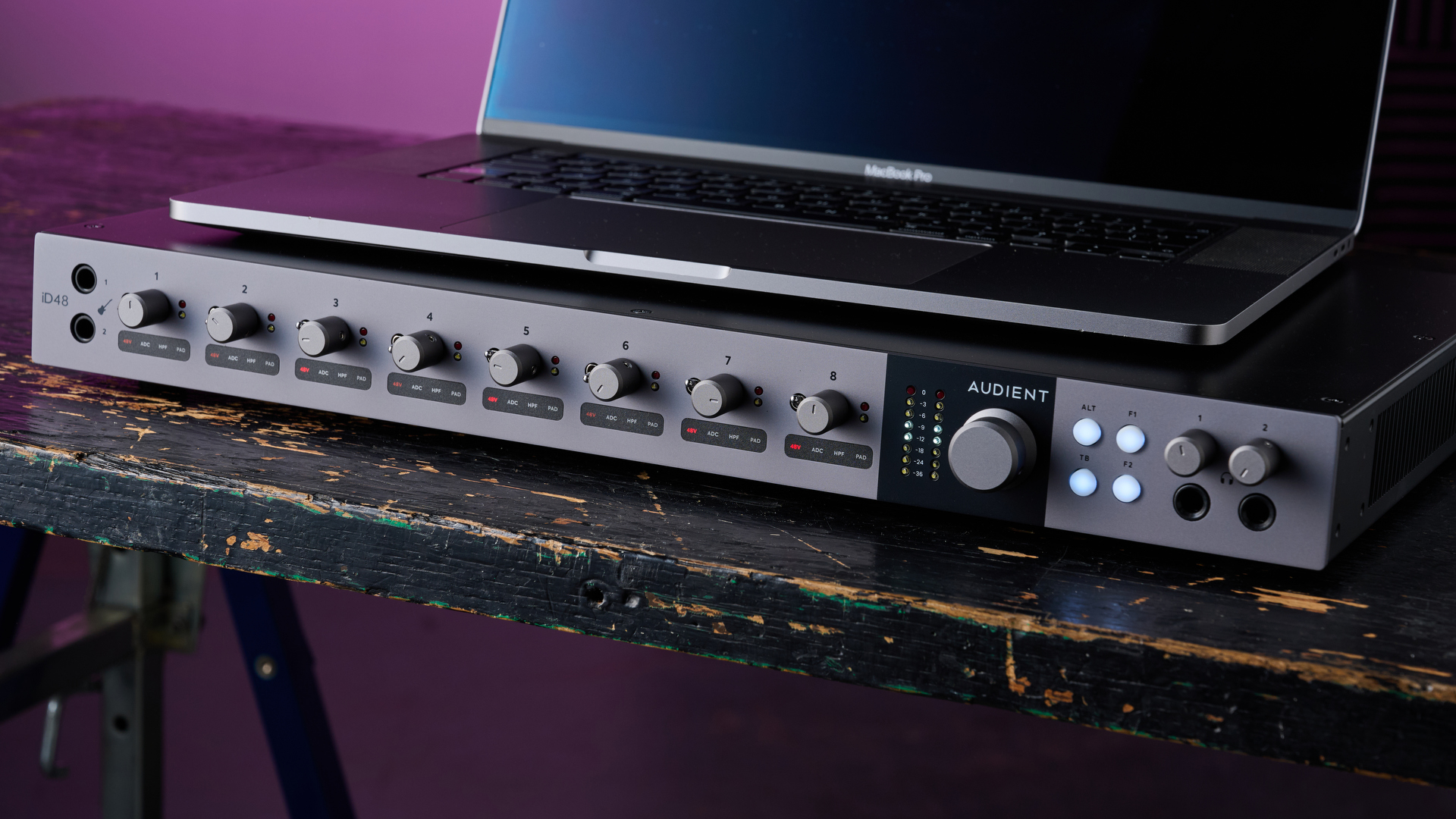MusicRadar Verdict
The head provides a brilliant stick response and sounds pleasing to the ears. The drum possesses the much sought-after snare sound with its balance of tone and overtone.
Pros
- +
Durable. Versatile.
Cons
- -
Any quibbles are likely to be purely down to personal preference.
MusicRadar's got your back
Under the sticks this month is the latest member of Remo's popular Powerstroke family.
Unlike its generic Ambassadors, the new P77 (and its close relatives), are drum specific. Designated for use on kicks, snares or indeed both are the P3 for snares and kick and Powerstroke X for snare.
The P4 (two-ply version of the P3) is for snares and kicks, the Powerstroke is kick only.
Build
All of Remo's heads are made from Mylar - a tough, weather-resistant, flexible film.
The '77' head has two 7-mil layers of this material, awarding it the '77' suffix. These dual layers give additional durability, help tame at least some of the overtones and slightly darken the overall sound.
Further resilience comes from a 5-mil thick centre patch, bonded directly onto the top of the upper layer - creating a virtual triple-decked drum head. This patch is in the optimum position, smack in the centre, where it is likely to take frequent and most powerful strikes - taking those hefty hits within its stride.
The lower layer is a clear film, while the upper layer sports the familiar textured white coating. This should add a little extra warmth while also being ideal for brushes. A thin, narrow band of 7-mil Mylar runs internally around the entire perimeter of the head, subtly calming any possible overtone leftovers.
Hands On
The '77' is fitted onto a beefy 14"x61⁄2" brass shelled snare - it was long overdue and in desperate need of replacement. This was confirmed by the immediate appearance of creases and large dips, as soon as the tension had been released.
After the old head has been removed, the shiny brass bearing edge is given a once-over with some waxy polish and the new head goes into position. Each of the 10 tuning bolts are finger-tightened so we achieve even tensioning. Around two complete turns later, with very few ofthe usual cracking sounds, the head is ready to roll.
Overall we hear a dry-sounding head, with any slight ring produced by the brass shell itself. The dryness and overall tone of course will depend on the degree of tension applied. With the drum cranked up - until you feel the key may not be able to turn anymore - the drum offers a penetrating crack. Great for stunning accents; fabulous for funk.
Rim shots are a drummers' secret weapon here, with devastating punch and significant cut. When up against a large brass ensemble or competing with high levels of amplification the snare more than holds its own. Tuned lower it provides a thick backbeat with its dry, dense sound. Overall, managing to create a surprisingly versatile drum sound.
Fantastic (free) plugins and how to use them: Full Bucket FB-3300
“It has the ingenious ability to give you easy routing to external hardware with no re-patching”: Audient iD48 review
“If this was real, it would be really impressive. But since it’s not real, it’s really impressive": Watch the bonkers four-note piano










